- Reports and Data
- Dollars to Results
- Quadrennial Diplomacy and Development Review
- USAID Forward
- Progress
- Data Resources
- Evaluation
- Strategy and Planning
- Budget and Spending
- Performance & Financial Reporting
There exist two overlapping Monitoring Country Progress (MCP) systems differentiated primarily by different data sources. One focuses on the Europe and Eurasia (E&E) countries and draws on E&E region-specific indicators in some dimensions. The other system is our more recently-developed global MCP system which uses data generally available across all regions of the world. The core of each of these systems consists of five dimensions and five corresponding indices. We highlight the MCP Global system below:
(1) Economic reform includes trade liberalization, fiscal reform, government effectiveness and commitment, macroeconomic (regulatory quality) reforms, and microeconomic (business environment) reforms.
(2) Governing justly and democratically includes rule of law and judicial reform, anti-corruption reforms, independent media reforms, civil liberties (and the development of civil society), and political rights (and the development of free, fair, and competitive elections).
(3) Macroeconomic growth and performance includes macroeconomic stability (inflation, current account balance, and external debt); per capita economic growth and its distribution (income inequality); and key economic structural indicators (including the size and competitiveness of the export sector, energy security, environmental sustainability, financial sector reform, and net inflows of foreign direct investment).
(4) Investing in people includes health outcomes (life expectancy, under-five mortality rates, and environmental health); education trends (functional literacy and combined education enrollment rates); public expenditures on education and health; per capita income; and gender inequality (reproductive health, proportion of females in parliament, and the proportion of females in the labor force).
(5) Peace and security includes measures of counter-terrorism (the severity of terrorism and the capacity of government to prevent it); combating weapons of mass destruction (government’s capacity to control the export of chemical, biological, and nuclear weapons); stabilization operations and security sector reform; counter-narcotics (demand and supply of opiates, cocaine, cannabis, and amphetamines); combating transnational crime (including money laundering, trafficking in persons, and piracy of intellectual property rights); and conflict mitigation (including the potential for political instability, conflict history, and the instability of neighboring countries).
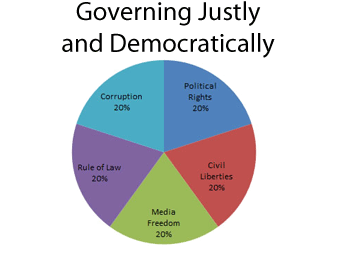 |
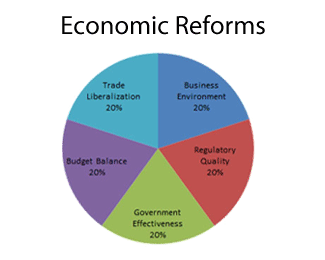 |
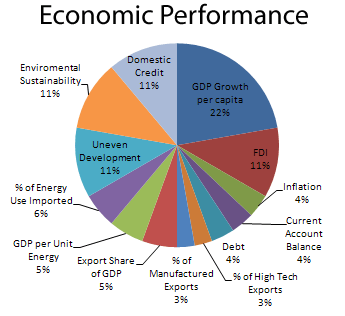 |
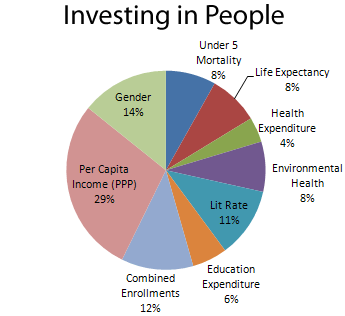 |
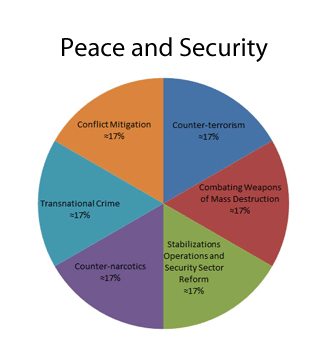 |
|
Method of analysis
MCP draws on publicly available, standardized (i.e., cross-country) data from a variety of sources including international organizations such as the World Bank, the International Monetary Fund, the World Health Organization (WHO), the United Nations Office on Drugs and Crime (UNODC), and the United Nations Children Fund (UNICEF); various U.S. government sources and reports (such as from USAID, U.S. Department of State, U.S. Department of Commerce, U.S. Defense Department, and U.S. Trade Representative); as well as think tanks and universities such as Freedom House, Transparency International, Fund for Peace, Binghamton University, and George Mason University.
For each index, primary data are converted to a 1 to 5 scale, where a 1 represents the worst country performances on that indicator worldwide and a 5 represents the best worldwide. Three indices (economic reforms, governing justly and democratically, and peace and security) are calculated by equally weighting the components. The weighting schemes for the other two indices (economic growth and performance, and investing in people) are more complex and attempt to reflect an iterative process of analysis and feedback among many colleagues in the U.S. government and beyond. The figures below provide the specifics of the weighting schemes for each of the five indices.
A key aspect of the MCP system’s method of analysis is the visual analytical tools. Four standard visual tools, illustrated below, are commonly used: (1) the development profile chart; (2) scatterplots; (3) the development gap (web) chart; and (4) trend analysis.
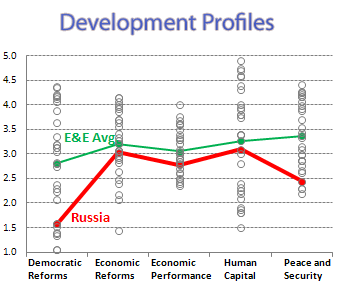 |
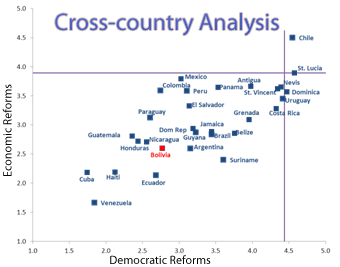 |
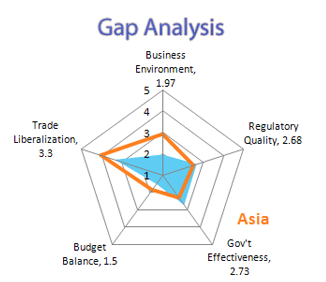 |
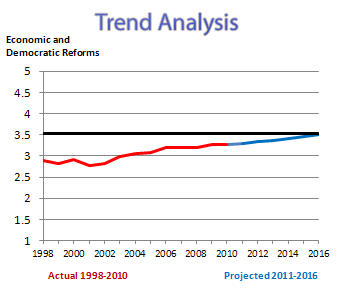 |







Comment
Make a general inquiry or suggest an improvement.